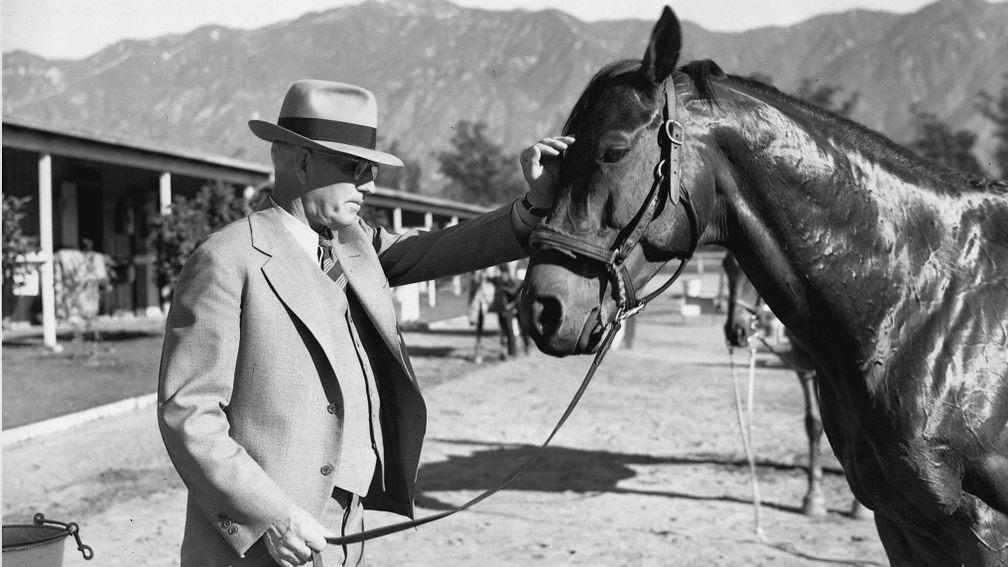DNA holds the key to understanding Seabiscuit's greatness

DNA samples drawn from the ‘silvered’ hooves of champion racehorse Seabiscuit have allowed scientists from the Institute for Equine Genomics to identify aspects of his genetic make-up that contributed to his legendary racing prowess.
Director of the institute Steven Tammariello and his team conducted tests on the two hooves, both of which are displayed by the California Thoroughbred Foundation, following a phone call with Michael Howard, the great-grandson of Seabiscuit’s owner Charles Howard.
In an article for theconversation.com, Tammariello writes: “He [Howard] mentioned that Seabiscuit’s hooves had been removed and preserved after he died. This piqued my interest as my lab group has had great success extracting intact DNA from ancient bone samples.
“As we drilled into the bone, the resulting powder turned from dark brown to white, suggesting the bones were indeed still there.”
One of the most famous horses of the 20th century, Seabiscuit is best known for his defeat of Triple Crown winner War Admiral in a match race held at Pimlico in 1938.
“We found that Seabiscuit had gene variants often found in horses that are distance runners [stayers],” Tammariello writes. “What was interesting however, was that underlying this were variants in minor racing genes, usually found in sprinters.
“This rare combination of stamina and speed is reflected in Seabiscuit’s race record as he won races ranging from five furlongs through to a mile and a quarter.”
Tammariello and his team intend to continue their study of Seabiscuit, hoping to unlock more information about his physical capabilities and the mentality of the horse crowned the 1938 American Horse of the Year and whose rags to riches tale was the subject of Oscar-nominated 2003 film Seabiscuit, which was based on Laura Hillenbrand's book.
Tammariello adds: “We will continue to examine Seabiscuit’s genome, focusing on genes linked to other physical attributes as well as those that control temperament traits such as aggression, curiosity and the ability to be trained.
“Perhaps Seabiscuit had variants in these behavioural genes that gave him the incredible desire to win despite his less-than-ideal physical attributes.”
Members can read the latest exclusive interviews, news analysis and comment available from 6pm daily on racingpost.com
Published on inNews
Last updated
- Join Racing Post Members' Club for the very best in racing journalism - including Patrick Mullins' unmissable trip to see Gordon Elliott
- Join the same team as Ryan Moore, Harry Cobden and other top jockeys with 50% off Racing Post Members' Club
- Racing Post Members' Club: 50% off your first three months
- 'It’s really exciting we can connect Wentworth's story to Stubbs' - last chance to catch master painter's homecoming
- The jumps season is getting into full swing - and now is the perfect time to join Racing Post Members' Club with 50% off
- Join Racing Post Members' Club for the very best in racing journalism - including Patrick Mullins' unmissable trip to see Gordon Elliott
- Join the same team as Ryan Moore, Harry Cobden and other top jockeys with 50% off Racing Post Members' Club
- Racing Post Members' Club: 50% off your first three months
- 'It’s really exciting we can connect Wentworth's story to Stubbs' - last chance to catch master painter's homecoming
- The jumps season is getting into full swing - and now is the perfect time to join Racing Post Members' Club with 50% off